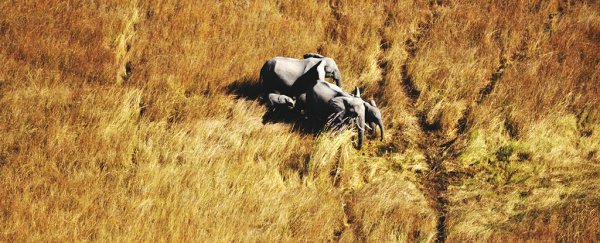Conservationists have started using satellite imagery to count elephants from space, a technique that British experts hope will help protect threatened populations in Africa.
Researchers at the University of Oxford and the University of Bath said the use of algorithms, machine learning, and satellite technology could replace current techniques used to count elephants – a critical aspect of conservation.
"The population of African elephants has plummeted over the last century due to poaching, retaliatory killing from crop raiding and habitat fragmentation," Oxford said in a statement.
"To conserve them requires knowledge of where they are, and how many there are: accurate monitoring is vital."
Currently, the most common technique for surveying elephant populations in savannah environments is aerial counts from crewed aircraft.
The academics said aerial surveyors can get exhausted, and are sometimes hindered by poor visibility.
"Satellite monitoring is an unobtrusive technique requiring no ground presence, thus eliminating the risk of disturbing species, or of concern for human safety during data collection," they added.
"A process that would formerly have taken months can be completed in a matter of hours."
The scientists first developed the techniques at South Africa's Addo Elephant National Park.
 An example of elephant spotting. (Duporge et al., Remote Sensing in Ecology and Conservation, 2020/(c) 2020 Maxar Technologies)
An example of elephant spotting. (Duporge et al., Remote Sensing in Ecology and Conservation, 2020/(c) 2020 Maxar Technologies)
The images, from a satellite orbiting 600 kilometres (some 370 miles) above Earth, could survey upward of 5,000 square kilometres (nearly 2,000 square miles) of land in one pass, captured in a matter of minutes.
The scientists trained the algorithm to recognise only adults among a dataset of 1,000 elephants in the park and then found it was also able to identify calves.
They hope such conservation technologies will be embraced as a matter of urgency to protect the world's biodiversity.
